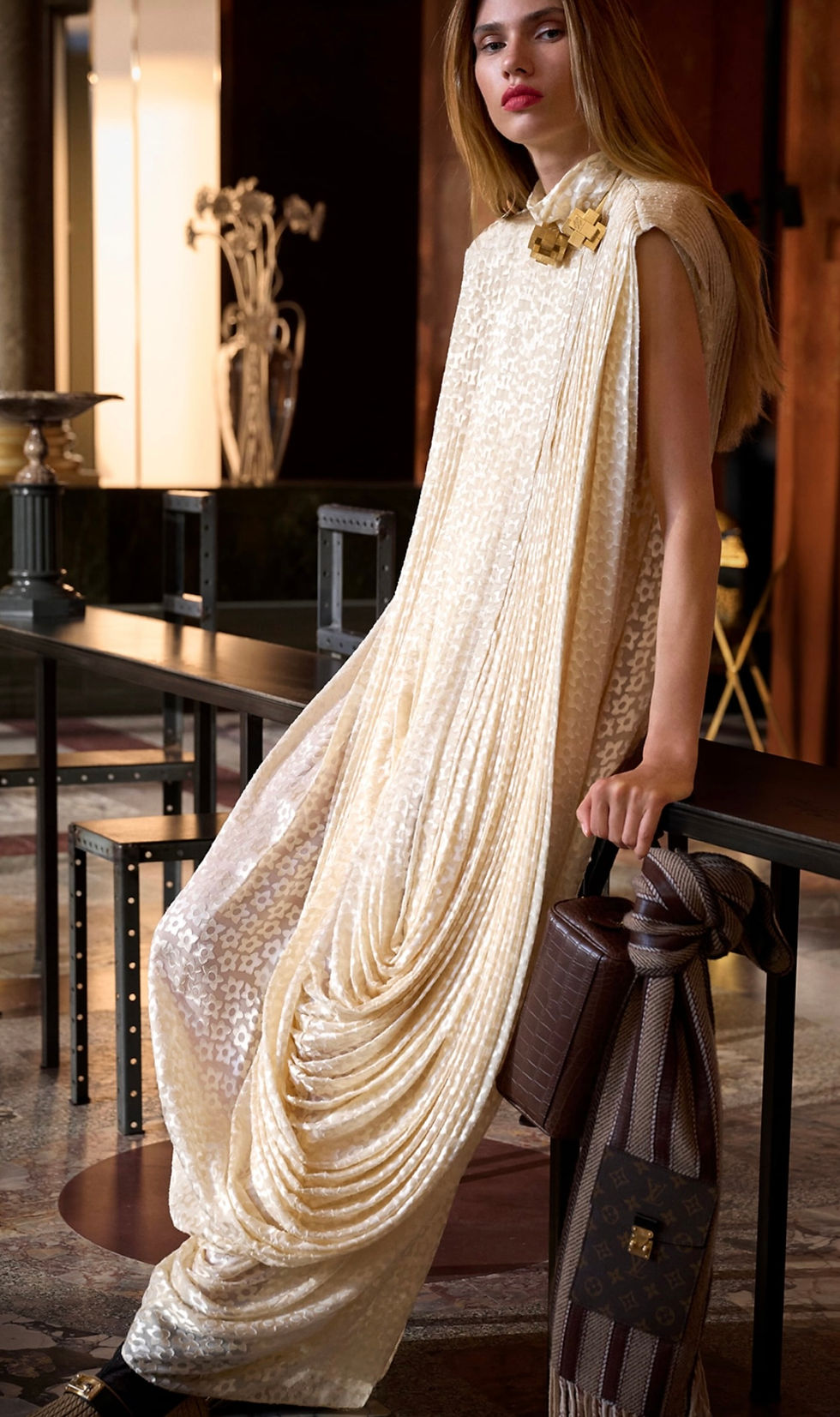When Designer Bags Become High-Value Heists: Paris Under Siege
- Luxe magazine Switzerland

- Aug 18
- 4 min read

When Designer Bags Become High-Value Heists: Paris Under Siege
A City of Elegance Under Assault
Paris, the world’s fashion capital, has long been the stage where couture houses unveil dreams stitched into fabric and leather. But in recent months, the city has also become the backdrop for a far darker performance: a wave of high-stakes heists targeting luxury handbags.
Organized gangs, executing raids with military precision, have transformed coveted accessories Hermès Birkins, Chanel Flaps, Dior Saddles, Louis Vuitton classics into the spoils of crime. Once symbols of aspiration and elegance, these items now double as criminal currency, their resale values rivaling diamonds.
According to The Guardian, recent thefts have yielded hauls exceeding €1 million in a single strike, raising the question: has fashion’s most glamorous capital become a battlefield in the global luxury black market?
Daring Raids, Million-Euro Loot
The most audacious recent attack occurred at Houlux, a designer resale boutique near Rue du Faubourg Saint-Honoré. In less than 20 minutes, thieves climbed a balustrade, broke into the fourth-floor showroom, and escaped with more than 100 bags, their resale value topping €1 million.
Other incidents followed: burglars forcing their way into Louis Vuitton offices, a ram-raid on the Boulevard Saint-Germain boutique (the third in nine months), and the theft of Loewe handbags worth around €100,000. In each case, criminals staged their assaults with coordination reminiscent of cinematic thrillers cars plowed into storefronts, then set ablaze as diversions.
This escalation recalls a pattern more common to jewelry or art theft. Yet in Paris 2024–2025, the spotlight has shifted. Handbags are the new crown jewels.
Why Handbags? The Perfect Criminal Commodity
The shift is logical, experts argue. Unlike jewelry, handbags are discreet, untraceable, and immensely liquid on the resale market.
“Prices have surged dramatically,” notes Jérôme Lalande, a Paris court expert in leather goods. “A Chanel bag that cost €5,000 five years ago is now €10,000. A Hermès model sold second-hand for €60,500.” (The Guardian, Aug. 2025).
Compact and coveted, handbags are easier to fence than luxury watches or diamonds. A single Birkin, depending on rarity and color, can fetch more than a car.
This makes them irresistible to organized gangs: highly portable, instantly valuable, and in global demand.
The Social Media Effect
Behind the boom lies another accelerant: social media. Platforms such as Instagram and TikTok have elevated luxury handbags into status symbols broadcast daily to millions.
Resale platforms like Vestiaire Collective and The RealReal amplify the phenomenon, legitimizing second-hand luxury as both fashion and investment. A Hermès Birkin is no longer just a style statement—it is a financial asset with appreciating value.
The visibility fuels aspiration. The aspiration fuels demand. And demand, inevitably, fuels crime.
Cinematic Heists, Real Consequences
Witnesses describe the raids as almost theatrical. At the Chanel boutique on Avenue Montaigne, robbers rammed a vehicle through the storefront, seized armfuls of bags, and torched the getaway car.
“Parisian boutiques have become stage sets for a new genre of crime,” remarked a security analyst in The National News. “What was once rare spectacle is now routine.”
The imagery is striking: broken glass glittering under streetlights, smoke from burning vehicles rising against Haussmann façades. It is glamour colliding with violence, an unsettling paradox.
Industry on Alert: Security vs. Accessibility
For luxury houses, the challenge is acute. Flagship stores embody openness and spectacle—marble floors, vast glass windows, prominent displays designed to seduce passersby. Yet those very features expose vulnerabilities.
Unlike banks, boutiques rarely install blast-resistant glass, reinforced walls, or bollards to block ram-raids. After repeated robberies, authorities in Paris placed anti-vehicle barriers in parts of Place Vendôme, home to jewelers and luxury shops (The National News, June 2024).
Still, fashion houses remain reluctant to transform temples of beauty into fortresses. “There is a delicate balance between enchantment and security,” says a retail consultant. “The moment boutiques resemble vaults, the magic disappears.”
Paris’s Image at Stake
The stakes extend beyond lost merchandise. Paris, marketed globally as the cradle of haute couture, risks seeing its brand tarnished by scenes of chaos.
Tourism is a vital pillar of the French economy, and luxury shopping is central to that appeal. A perception of insecurity could discourage high-spending visitors.
Meanwhile, insurers are grappling with soaring claims, potentially raising premiums for boutiques already stretched by costs of global marketing and security upgrades.
Fashion as Currency
At the heart of this crisis lies a profound shift: fashion is no longer mere aspiration. It has become a fungible form of wealth.
Handbags operate like commodities. Limited supply and cultural cachet transform them into “soft gold.” As one criminologist told Le Monde, “These are no longer accessories. They are assets, like cryptocurrency volatile but immensely valuable.”
The broader implication is sobering: when luxury becomes liquid, it becomes loot.
What Comes Next?
Authorities in Paris are intensifying patrols and urging brands to invest in stronger security. Some propose embedding microchips into bags for tracking, though skeptics argue that counterfeiters already defeat similar technology.
Fashion houses are experimenting with private security partnerships, while insurers lobby for stricter safety standards. Yet criminals remain agile, often one step ahead.
Conclusion: The Cost of Visibility
The handbag heists of Paris illuminate the tension at fashion’s core: visibility fuels desire, but visibility also attracts predators.
As the city confronts a surge of million-euro raids, the question is no longer whether thieves can steal a designer bag it is how often, how violently, and at what cost to Paris’s allure.
Until brands and authorities strike a new equilibrium, the City of Light may continue to glitter, but under siege.
Sources:
The Guardian, Aug. 2025: “Paris luxury handbag heists see Dior, Chanel, Hermès targeted.”
The National News, June 2024: “Chanel and Bulgari store robberies prompt security upgrades in Paris.”
Dagens, Aug. 2025: “Thieves steal over €1 million in designer bags in Paris heist.”
Euro.dayfr.com, Aug. 2025: “Luxury theft in Paris surges as handbag values soar.”
#LuxuryAsCurrency








